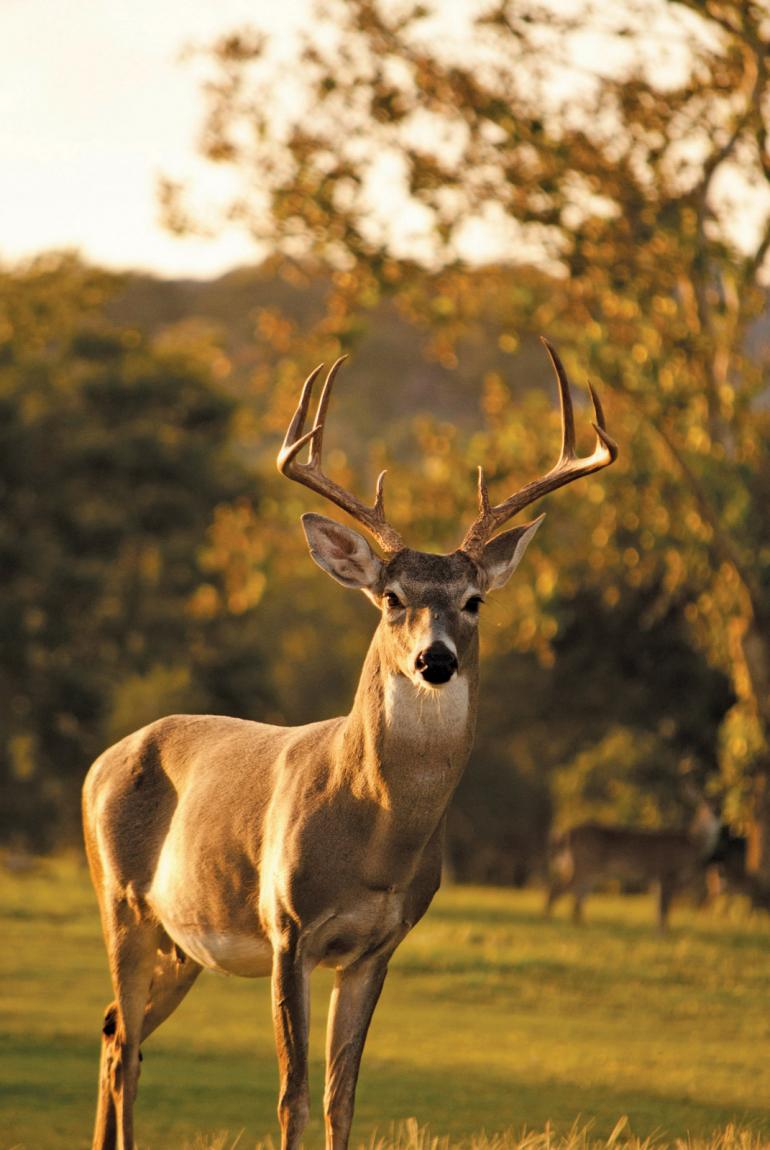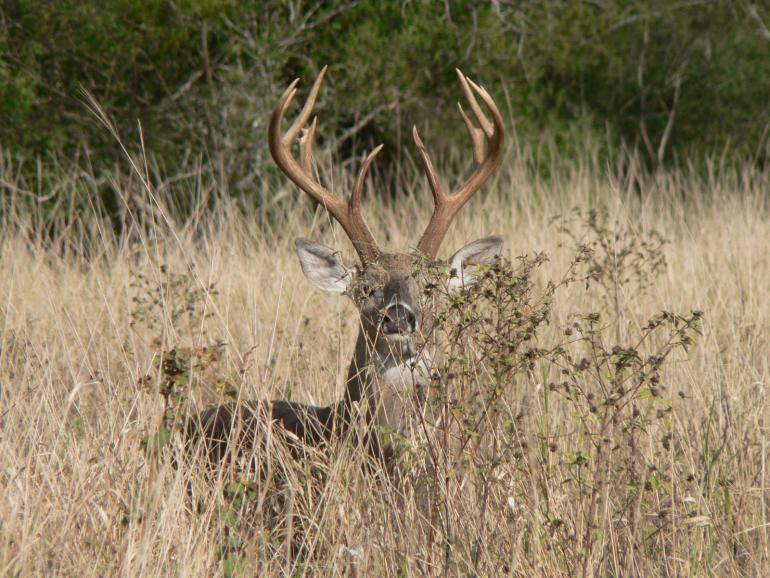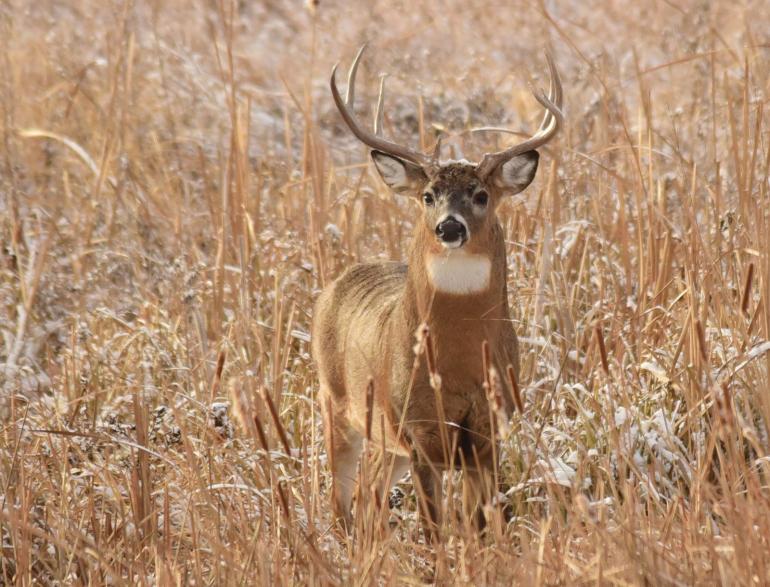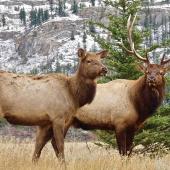Anywhere & Everywhere
Whitetail hunting close to home.
“I think that’s a whitetail buck,” I said to myself, as I examined the tracks in the snow beside my feet. It didn’t make any sense. I was hunting on top of a mountain, nearly 8,000 feet up. This was elk country. Hell, this was goat country. There shouldn’t be any whitetail up this high, yet here were the tracks. With a deer tag in my pocket, I decided to follow the tracks as they wound their way through the pine trees.
An hour later, I caught up to a fat whitetail buck grazing along the mountainside and dropped him in his tracks. I had seen a lot of deer sign along the way, even jumping up a few does while I was following the buck. As I walked up to him, I gazed around at the harsh alpine environment and thought, man, these deer can live anywhere.
Generally, finding whitetails is all about finding their food. Like mule deer, whitetail are browsers that feed on grasses, leaves, and young plants.
Habitat
There are over 30 million whitetail deer running around the continental US, which is no surprise as whitetail thrive wherever there is sufficient cover, food, and water. The 200,000 or so deer living in Montana can be found anywhere from high mountain peaks to willow-choked creek bottoms to downtown backyards. This flexibility of habitat makes the whitetail deer a very popular target for hunters, as a good whitetail-hunting spot can almost always be found close to home.
Generally, finding whitetails is all about finding their food. Like mule deer, whitetail are browsers that feed on grasses, leaves, and young plants. However, they are less picky than their larger cousins and can subsist quite well on things like nuts, fruits, aquatic plants, and especially crops like corn and alfalfa. This makes whitetail particularly easy to find around agricultural fields, especially at lower elevations where they have less competition from other species and fewer predators. Additionally, whitetails are very fond of waterways, making true hotspots out of riparian zones with cover like trees and brush immediately adjacent to good feeding areas.
Behavior
Whitetails are homebodies. Unlike mule deer, which have both a summer and winter range, whitetail will spend their entire lives on the same 40-acre property so long as it has sufficient cover and feed. This makes whitetails more predictable than other species and easier for hunters to pattern. Usually, if you find a spot with a lot of fresh sign, chances are good that the deer are still around and will come back—especially if you visit the area in the early morning or late evening when they are most active. However, this predictable behavior doesn’t mean that whitetails are always easy to hunt. They have an incredible sense of smell and excellent hearing, and are constantly on the lookout for threats. If you make one mistake, like moving too quickly or stepping on an errant stick, the only thing you’ll see is that notorious tail, waving like a flag in the distance as the deer makes a quick getaway.
Rut
As guarded as whitetail bucks generally are during most of the year, they can become completely reckless during the rut. Usually occurring within the first two weeks of November, the rut will occasionally see doe-crazed bucks running full-tilt across open fields in the middle of the day, or coming into calls and rattling antlers practically on a string. While it can be tricky to predict, undoubtedly the rut is the best time both to see deer and to harvest a big buck. Note, however, that rutting bucks can be gamey; so if it’s the best-tasting meat you’re after, try to bag one before mating season hits full-swing.
Both rifles and bows will work for whitetail, though they require different hunting techniques.
Gear
Whitetails are not the biggest game. Most does weigh in at around 120 pounds and even the largest bucks won’t break the 250-pound mark. Accordingly, you’re not going to want a rifle larger than a .30 caliber, and will even do well with something smaller like a .243. Larger calibers will obviously work, but can result in losing some venison.
Aside from a weapon, you’ll want to bring all the standard hunting equipment: a good pair of boots, a sharp knife, and a pack or rope to transport your deer out of the field. Additionally, there is also whitetail-specific equipment that can be helpful. Both tree stands and ground blinds are excellent tools for hunters targeting whitetails along deer trails and field edges. It can also be a good idea to bring a grunt call, bleat call, or a set of rattling antlers, as whitetail are very responsive to calling. However, it’s best to keep calls light and variable until you see exactly how the deer are responding.
Bow vs. Rifle
Both rifles and bows will work for whitetail, though they require different hunting techniques. For bowhunters, sitting in a tree stand or a ground blind near a deer trail is the way to go as the deer can be extremely difficult to stalk into bow range. Rifle hunters can do the same but also have the option to spot and stalk, still hunt, and track with their ability to take longer shots on spooky and often heavily pressured deer.
Pack-Out
Many hunters pursuing whitetail close to the road or civilization hunt with only a rope that they can loop around the deer’s antlers or neck to drag it out whole. However, if you’re hunting in the backcountry or in rough terrain, it’s best to quarter the deer and bring it out in loads. Always do your research and bring the appropriate equipment with you to ensure that you can get your deer out as quickly and efficiently as possible, with no loss or tainting of meat.
Regs
Whitetail are a very user-friendly big-game animal in southwest Montana. Over-the-counter tags are good for nearly every hunting unit, and many districts have additional doe tags available for purchase, allowing hunters to completely fill their freezers with high-quality venison. Be sure to consult the FWP website for regulations on the specific districts you plan to hunt before taking to the field.
Kubie Brown has been a fishing and hunting guide for over ten years, and is also a freelance writer whose articles have been published in dozens of places, including The Drake and the MeatEater website. He lives in southwest Montana.












